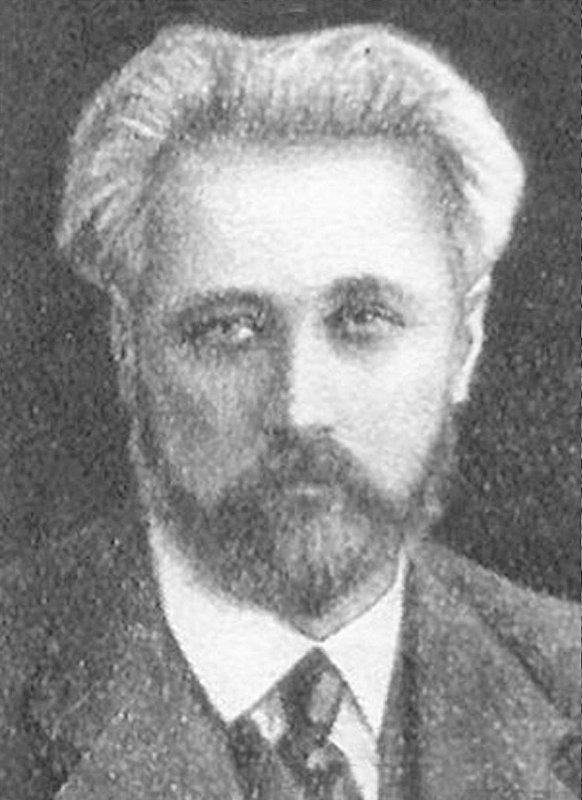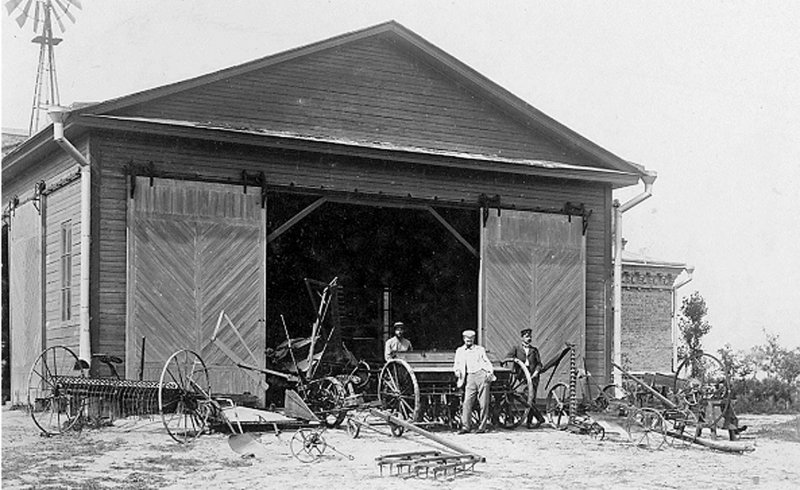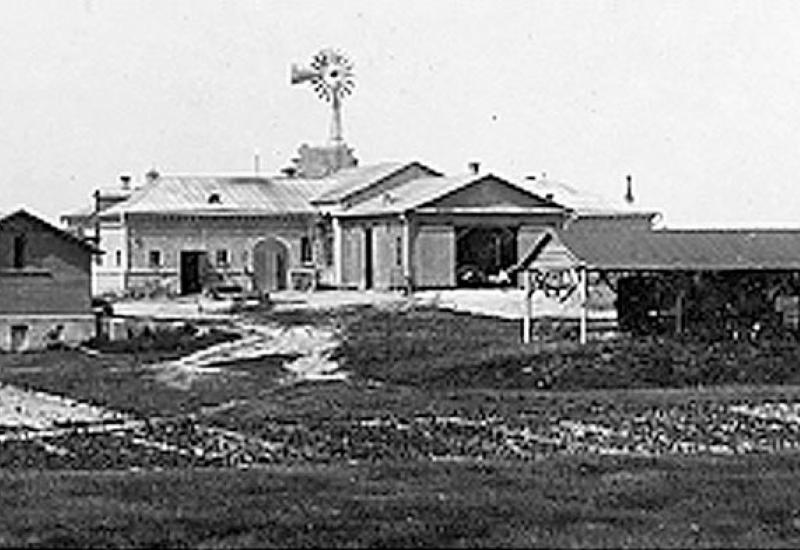The old maps of Kyiv, not far from the Kyiv Polytechnic Institute, near the khutir of Hrushky, show land marked as the Farm of the Kyiv Polytechnic Institute. What was this now forgotten farm?
The khutir of Hrushky, a historical territory of Kyiv, was located between the present streets of Harmatna and Mykola Vasylenko in the Solomianskyi district. The khutir got its name after its former owners. In 1869, the Kyiv Chamber of State Estates allocated 14 plots of land to the city. In 1871, nobleman Kostiantin Hrushko and his wife Ustyna Hrushko bought most of this land.
Later, the Kyiv City Public Administration gave a separate estate with a territory of 30 acres to the agricultural department of the Kyiv Polytechnic Institute. The Institute could create there a research station for agriculture machinery and implements. This area was slightly smaller than the hall of the Kyiv Polytechnic Institute and occupied an area of 38 acres. The Hrushky Institute Farm (it was research field #2 while the city plans named it the Kyiv Polytechnic Institute Farm) was located three miles from the campus, near the Karavaievi Dachy country estate (the National Aviation University at present). One could walk along Borshchahivska Street from the hall of the Kyiv Polytechnic Institute. Nearby were arable fields. Closer to the Brest-Litovsk highway, there were 76 acres given to the military department. The department got these 76 acres and allowed the site for constructing the Kyiv Polytechnic Institute. Another neighboring territory on the way to the Hrushky Institute Farm was a brick factory of Stepan Fuzik (one of the representatives of a wealthy rural family).

On April 22, 1902, according to the act of acceptance of buildings and structures of the Kyiv Polytechnic Institute of Emperor Alexander II, the institute board headed by Director Viktor Kirpichov accepted the architecture of experimental field #2:
1) a stone building for testing agricultural implements with a wooden extension for the arena and living quarters for workers with a volume of 384 cubic yards and an area of 125 square yards;
2) a wooden barn for storing agricultural implements with a stone cellar;
3) a wooden canopy for agricultural machinery, etc.
The test station for agricultural machinery and implements was founded in 1900. The same year, part of the field territory was transferred to the test station. The station began operating in 1901 when crop rotations were established, buildings were constructed, and tests of agricultural machinery were set up. The architect of the Kyiv Polytechnic Institute, Vsevolod Adolfovych Obremskyi, designed the buildings and supervised the construction.
 Acting Extraordinary Professor Camille Gavrilovich Schindler was entrusted with organizing work and managing the agricultural machinery test station. He was appointed after a meeting of the Kyiv Polytechnic Institute Council on August 24, 1899. The Council addressed “teaching agricultural mechanics and building agricultural machinery in mechanical and agricultural departments”, and testing agricultural machinery. Director of the KPI Viktor Kirpichov noted that teaching this subject “should be entrusted to a specialist who will get the title of professor”. He proposed his candidate - a mechanical engineer Camille Gavrilovich Schindler, “He graduated from the Imperial Moscow Technical School in 1893 and then served at a sugar factory until 1895. Later Schindler spent seven months abroad and studied agricultural machinery. Then, he taught practical classes on such machines to students of the Moscow Agricultural Institute. The Ministry of Agriculture and State Property sent to study agricultural engineering to Germany, France, England, and North America for one and a half years.” Also, Viktor Kirpichov informed that Camille Gavrilovich Schindler was good at testing agricultural machinery in 1898-1899 when he worked as a laboratory assistant at a research station at the Kharkiv Technological Institute of Emperor Alexander III.
Acting Extraordinary Professor Camille Gavrilovich Schindler was entrusted with organizing work and managing the agricultural machinery test station. He was appointed after a meeting of the Kyiv Polytechnic Institute Council on August 24, 1899. The Council addressed “teaching agricultural mechanics and building agricultural machinery in mechanical and agricultural departments”, and testing agricultural machinery. Director of the KPI Viktor Kirpichov noted that teaching this subject “should be entrusted to a specialist who will get the title of professor”. He proposed his candidate - a mechanical engineer Camille Gavrilovich Schindler, “He graduated from the Imperial Moscow Technical School in 1893 and then served at a sugar factory until 1895. Later Schindler spent seven months abroad and studied agricultural machinery. Then, he taught practical classes on such machines to students of the Moscow Agricultural Institute. The Ministry of Agriculture and State Property sent to study agricultural engineering to Germany, France, England, and North America for one and a half years.” Also, Viktor Kirpichov informed that Camille Gavrilovich Schindler was good at testing agricultural machinery in 1898-1899 when he worked as a laboratory assistant at a research station at the Kharkiv Technological Institute of Emperor Alexander III.
In spring 1901, an agronomist Serhii Mykolaiovych Bohoiavlenskyi became Head for Management Services of the station.
At the test station, students of the agricultural and mechanical departments studied the design of the agriculture machines. They also worked directly in the field and tested new equipment for reliability, consolidated the acquired theoretical knowledge of fieldwork. Teachers and students researched mechanization and modernization of agricultural machinery and developed test methods. The successful work of the station was facilitated by its close location to the campus of Kyiv Polytechnic Institute.
Camille Schindler presented the result of his scientific activity in 1902. He then published the world's first book “Polytypes, Sketches and Drawings of machine tools of modern agriculture”, and other books on agricultural machinery.
On February 18, 1911, a meeting of the KPI Council announced a resolution of the Mechanical and Agricultural Departments. It meant that “Professor Camille Gavrilovich Schindler set to unimagined heights of excellence the teaching of agricultural machinery and implements, as well as and the work of their experimental research. Due to his hard work and perseverance, a test station for agricultural implements has gained wide popularity not only in the South-Western region but throughout Russia.”

The test station of agricultural machines of Kyiv Polytechnic Institute played a huge role in training qualified specialists. It became the first Russian Empire permanent operating test station for agricultural machinery. Later, Professor Camille Schindler used the experience gained at Kyiv Polytechnic Institute to create agricultural stations in Yelisavetgrad and Rostov-on-Don.
In 1922, the KPI #2 research field, together with the agricultural machinery test station, was given to the Kyiv Agricultural Institute, based on the agronomic faculty of Kyiv Polytechnic Institute.

